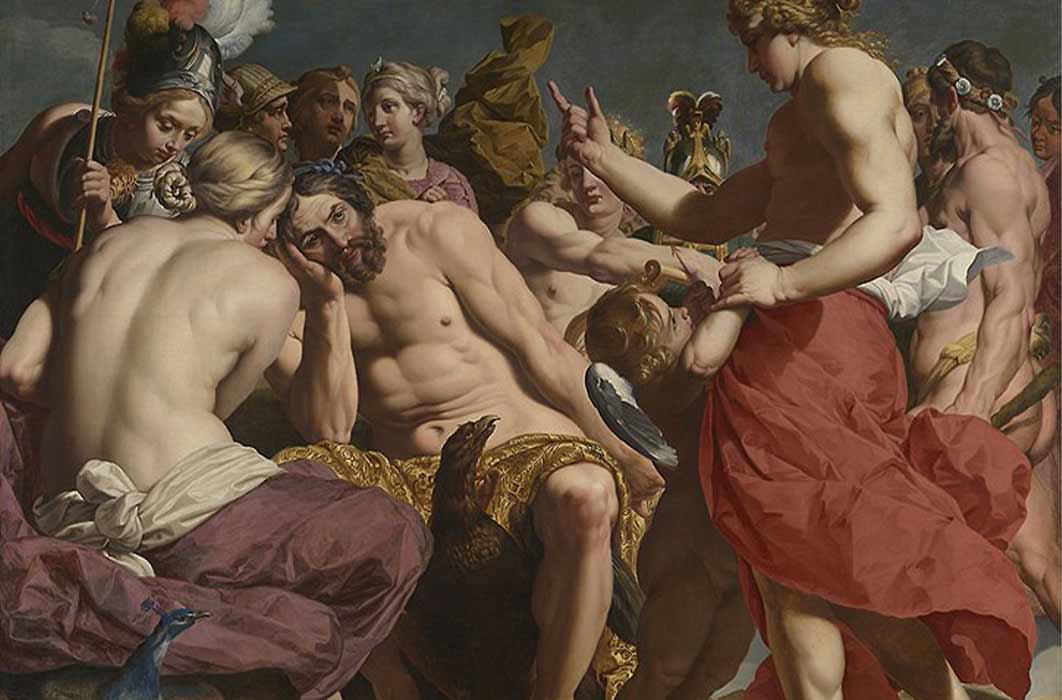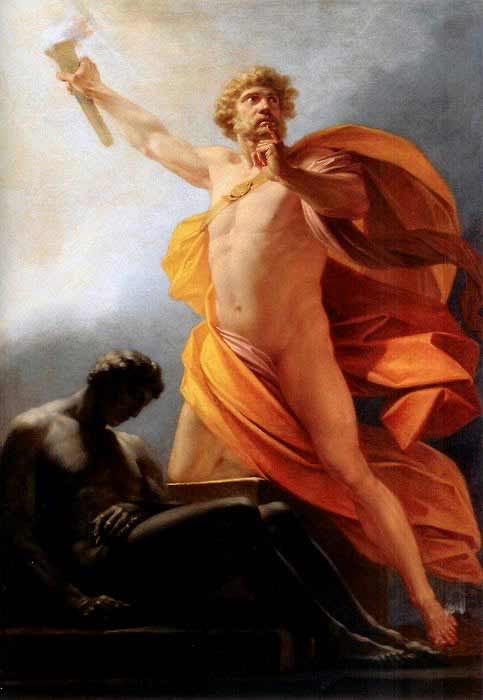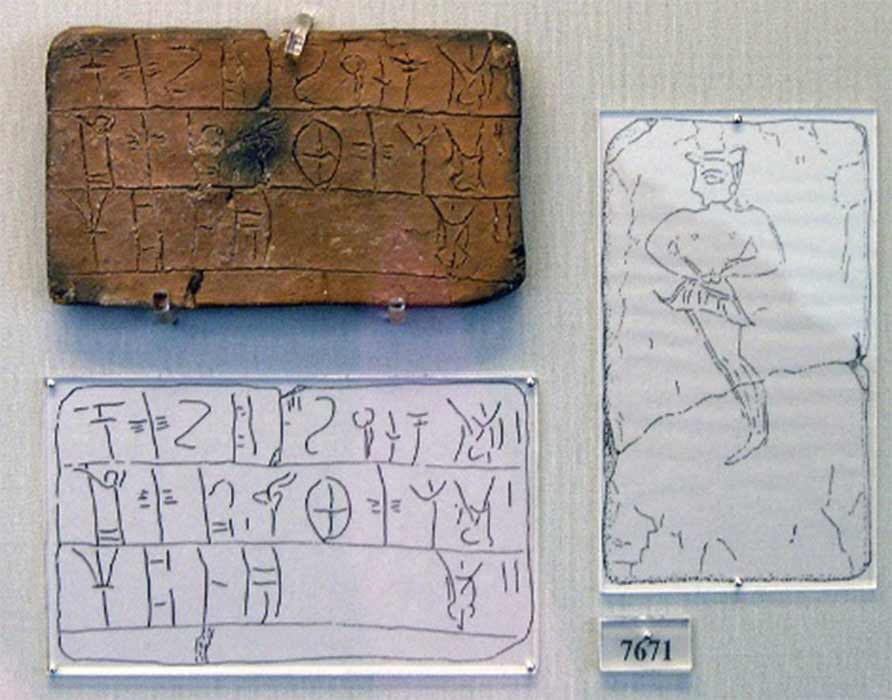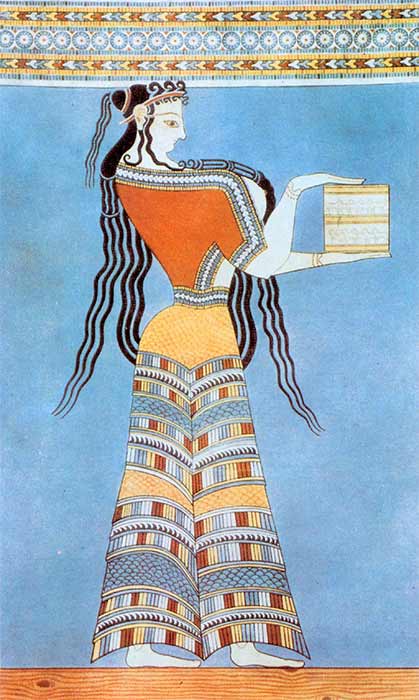
The Origins Of Ancient Greek Creation Mythology
Since the beginning of humankind, there has been the pressing need to understand the reasons why humans were created. What purpose do humans serve? Each ancient and modern culture hold their own stories, some of which build on top of older tales. The ancient Greeks were no exception. Layering on events and beliefs that originated during the Mediterranean Bronze Age, bards such as Homer and Hesiod preserved a tradition of the creation of mankind. Typically, when one thinks of ancient Greek creation, the first thing that comes to mind is what is taught to Greek children at school, that is, 12 Olympian deities lived and ruled from Mount Olympus. Zeus was the leader of the pantheon and wielded the thunderbolt, Poseidon ruled the seas and Hades, the Underworld. The gods created mortals and the demigods to worship them. And during the Age of Heroes, these mortals went on fantastical voyages killing gorgons, avoided being eaten by the cyclopes, were enchanted by witches and endured so many more adventures, to tantalize the imagination of any child. However, setting imagination aside, spanning centuries, there was a cross-pollination of cultural traditions among the Mediterranean and Anatolian cultures, woven into the tapestry of the creation mythology of the Greeks.

Prometheus brings fire to mankind. (Public Domain)
The Golden Age Of The Mycenaeans
The earliest period to date Greek culture and cult is the Late Bronze Age period. The Greeks of the time are referred to as Mycenaeans (named after the citadel, Mycenae in the Peloponnese) and they spoke an early form of the Greek language. At their zenith, between the 15th - 12th centuries BC, they both occupied and maintained control of the entire Aegean. The Mycenaeans overpowered the weakened Minoan civilization in the same region. It is generally believed that the Minoans were weakened by the devastation brought on by the volcanic eruption on the island of Santorini or Thera in the 16th century BC. Mycenaean-ware (pottery, art, jewelry, wines, perfumes, olive oil, weaponry) was widely distributed throughout the Mediterranean and exported goods have been archaeologically discovered in Anatolia (Turkey), Megiddo (Israel), Egypt to as far east as Babylon (Iraq) in Mesopotamia. It was a time of prosperity for the Mycenaeans: the Golden Age or Golden Era, which lasted a few centuries.

Mycenaean Linear B tablets (CC BY-SA 2.5)
The Mycenaeans had a writing system, adopting the one used by the Minoans before them. It needs to be clarified that while the Minoans inhabited and ruled the Aegean prior to the Mycenaeans, they did not speak an ancient form of Greek. It was an Indo-European language closely related to Luwian, spoken in Western Anatolia. Minoan continues to be an undeciphered language. Their writing system is referred to as Linear A while the variant adopted by the Mycenaean Greeks is referred to as Linear B. Linear B is the oldest form of written Greek to date. Scholars have deciphered this language and the many tablets discovered throughout the Greek mainland and Crete (mostly at Knossos). Despite these many tablets, very little is actually known about the Mycenaeans themselves regarding their religion, rituals and customs. The texts are purely administrative, inventories or cataloging men, livestock, and sundry, and the majority of the texts discovered date to the very end of the Mycenaean civilization, to a period of mass destruction when internal rebellions brought down the elite. In the course of the revolts, palaces were burnt permanently baking these inscriptions into the clay tablets, preserving them. At the time the tablets were used to temporarily record information and when needed to be reused, the scribes would wet the surface, wiping out the previous inscriptions and etched new information.

Fresco of a Mycenaean woman, reminiscent of a Minoan woman, illustrating cross-cultural influence. (Public Domain)
Subsequently Mycenaean mythologies or tales on creation or any other anthropological information, are not recorded, yet it is commonly accepted that some aspects of their religion and rituals were likely adopted from the Minoans. It is believed that the Minoans worshiped a Mother Goddess who took prime position in their pantheon. A knowledge of Linear B and Mycenaean Greek, allows one to use the same phonetic values to transliterate the Minoan Linear A. By using this method, many Proper Nouns have been identified, including a very important deity who was referred to as A-ta-no-dju-wa-ja or Athena Goddess. The word dju-wa-ja can be compared to the Proto-Indo-European deiwo or ‘god’ (also an early rendering of the name Zeus) and in some cases, this label is associated with the Sun. Eventually, when the Mycenaeans dominated the Aegean and the Minoans were assimilated into the newly established Mycenaean culture, this same deity evolved to A-ta-na-po-ti-ni-ja or Mistress Athena (or Potnia Athena). The exact position this Mistress Athena took within the Mycenaean pantheon is unclear, but by the time the Greeks emerged from their Dark Age circa 800 BC she had a taken a backseat to other ‘more powerful’ and male Olympians. There are references to Ares, Poseidon, Hermes, Hephaestus, Dionysus, Artemis, Hera and more in Linear B tablets. Again, no additional details are present. It is believed that many, if not most of these deities served in local cults or specific regions but were not as widespread at the time.




